The three-year-old Chinese-made MG4 still remains the EV to beat in 2025 – here's why
Affordable, long range and available as a sports model, the MG4 is still my favorite electric car
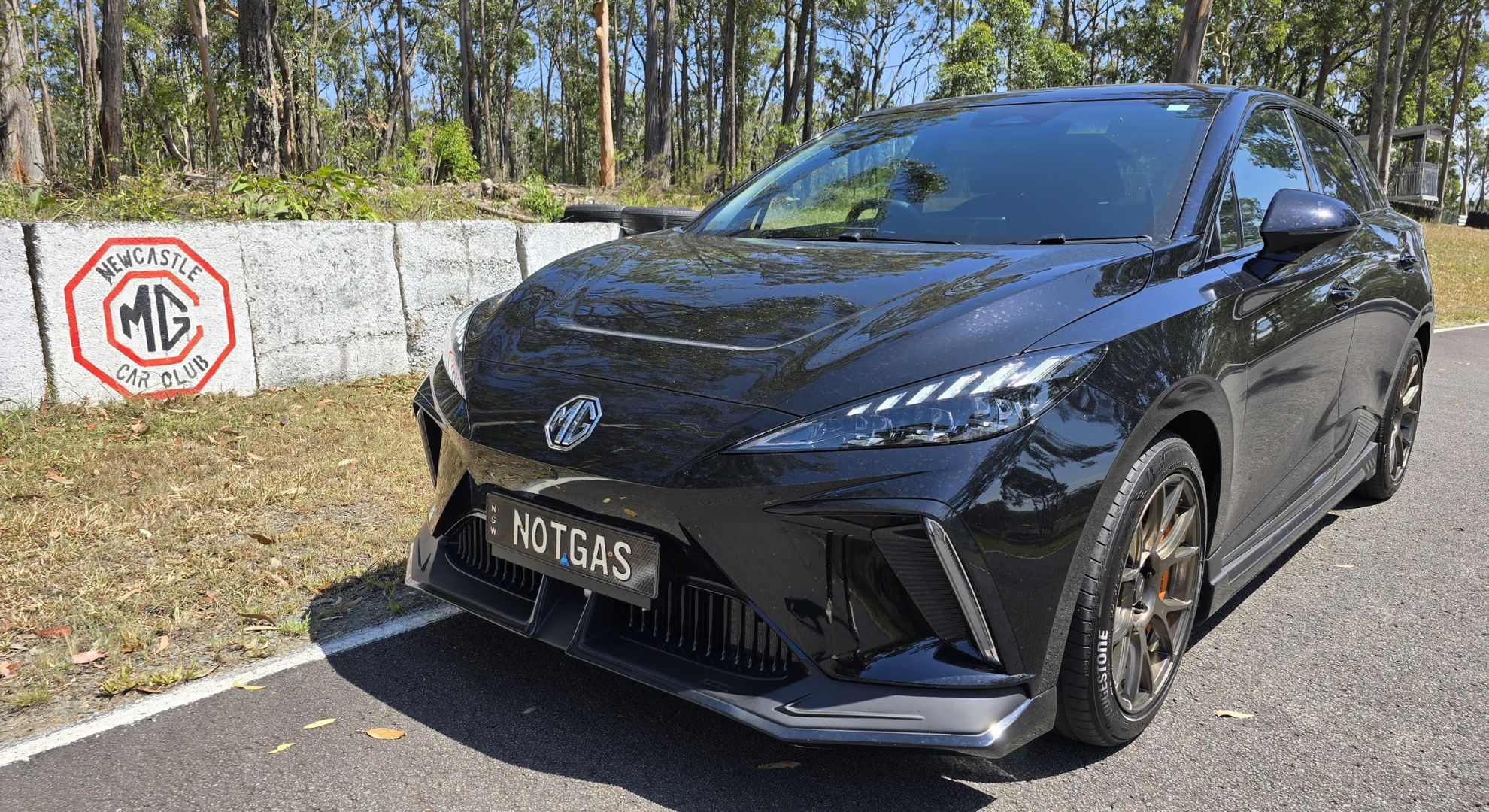
The MG4 is a darling in the EV world. Available at an attractive price and offering a comfortable rear-wheel drivetrain, this hatchback stands up against heavy hitters from Tesla, Hyundai and Kia. It’s a brilliant cheap option for anyone who doesn’t want a big car, and in the electric space, it’s my favorite of the bunch.
In mid-2022, the MG4 debuted in China, followed by Europe the next month and Australia the following year. It quickly became one of the most beloved models to come from the country, sporting the ‘MG’ badge that SAIC Motors bought in 2007, and offering what is arguably the best car the company has built since the acquisition.
Because of its Chinese origins, it’s unfortunately not available in the US for tariff and trade reasons. That’s a shame because, if it were introduced, it’d offer exceptional value at the entry point of the market. I’ve driven more than 30 EVs over the past three years, and even a year after the introduction of the MG4 in Australia (where I’m based), it’s still my car of choice – beating out other value-packed Chinese options from BYD and GWM.
Frankly, it ticks all the boxes. Here’s why I continue to love it so much.
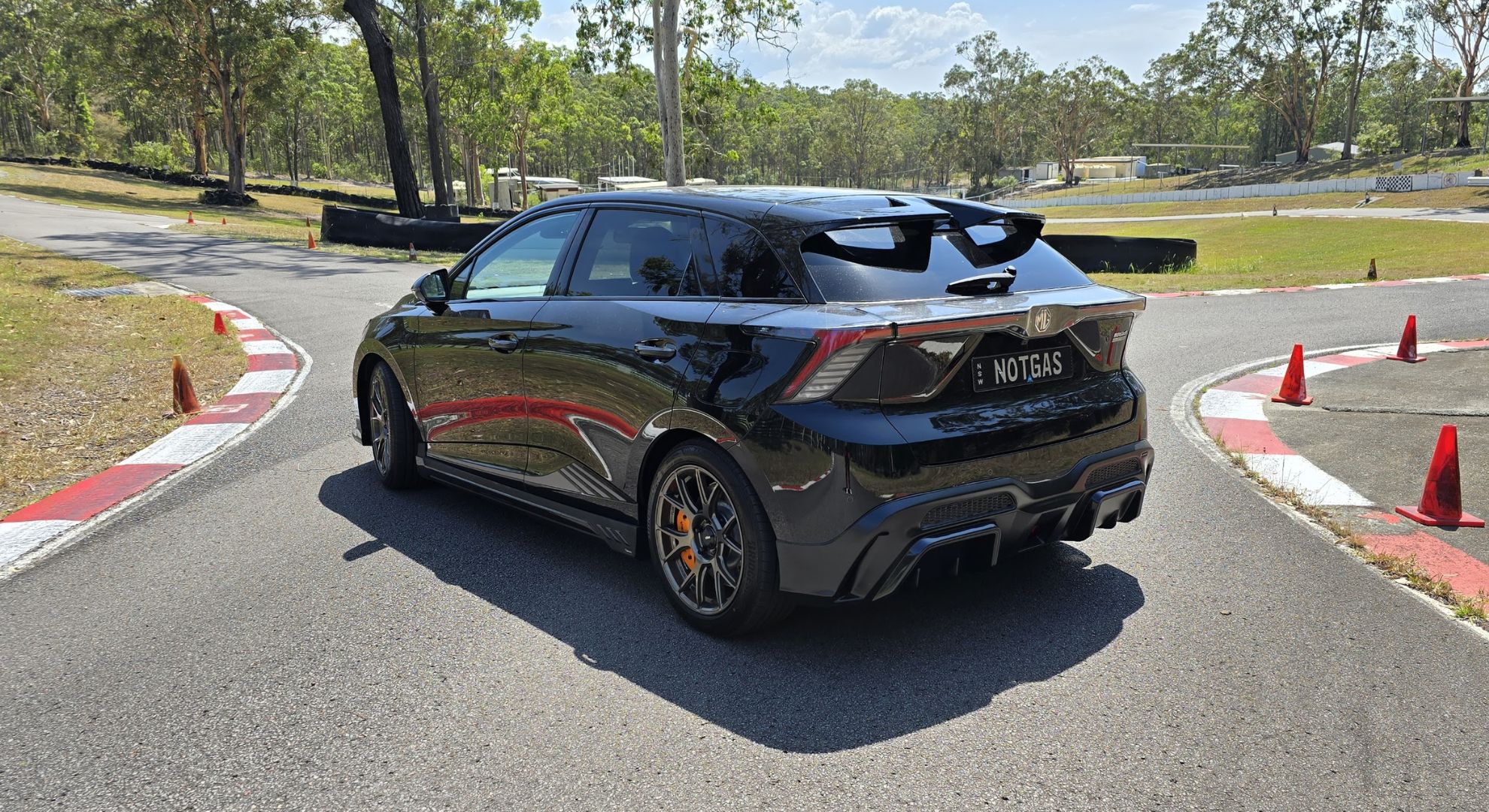
More than just power
To get ahead of things, I drove the MG4 XPOWER over the Christmas and new year period – this is the most expensive model in the MG4 family, but also still the cheapest AWD EV in Australia, and the lowest-priced car capable of 0-100km/h in 3.8 seconds Down Under. That's saying something, isn't it? In other words, it’s a total rocket, and MG Australia modified this specific model I test drove with a new trim, different wheels and a lowered frame. MG is currently assessing the car with mods for local sale, and how could I say no to testing such a beast? Please do excuse the number plate – it wasn’t my choice.
While getting speeds like this at such a low price is epic, this really isn't about the modified XPOWER. I have nothing but love for it but, in my practical mind, I think its the cheaper and longer-range RWD models that are worth talking about here.
To make things confusing, the MG4’s naming is different depending on the market – models tend to have different names across the UK, Europe, Australia and so on – so to simply give you an idea of what you’re getting, I’ll be sticking to the Australian names, but note that it may be named differently (and include different tech) where you live.
Get daily insight, inspiration and deals in your inbox
Sign up for breaking news, reviews, opinion, top tech deals, and more.
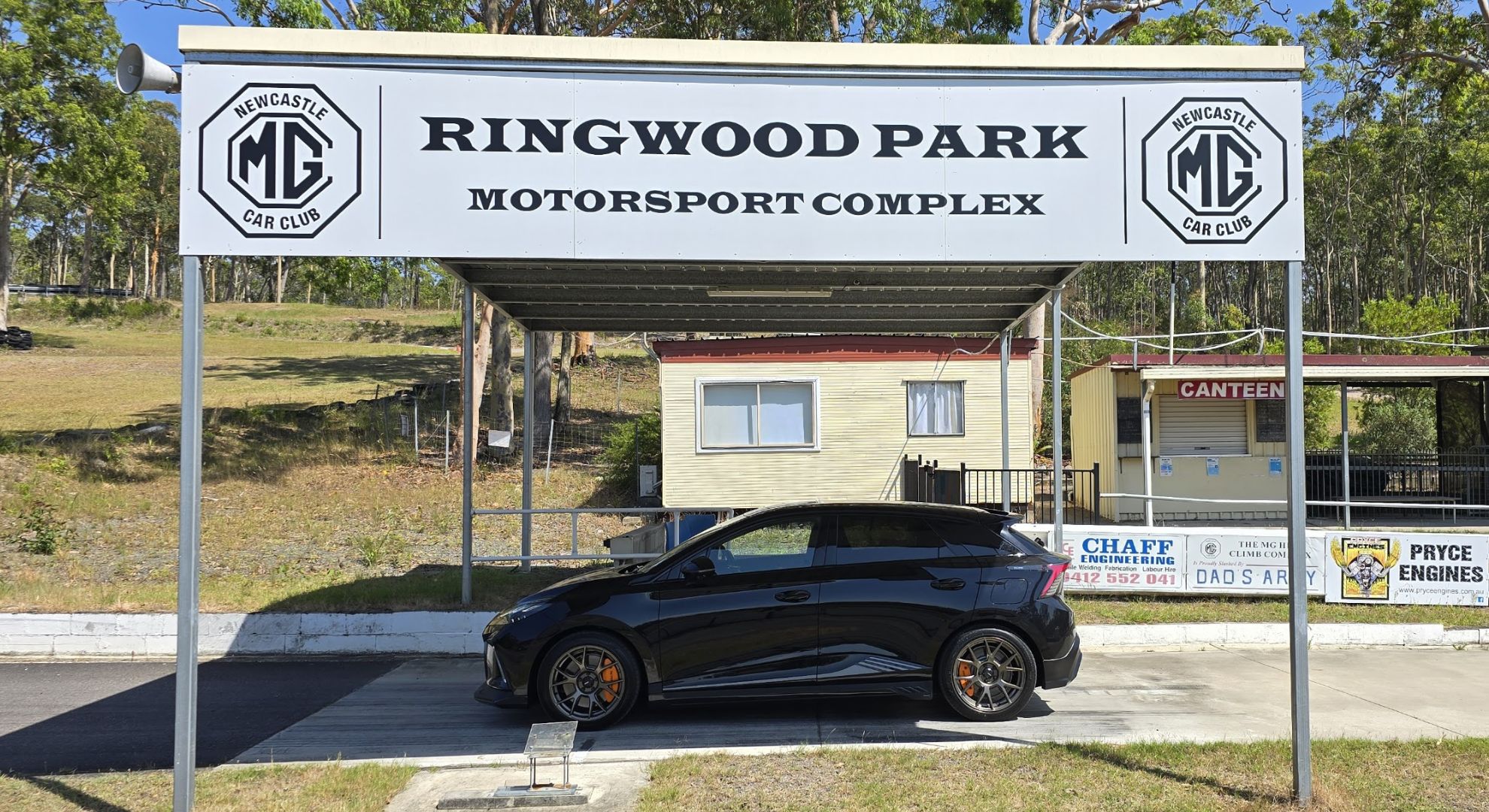
The entry-level MG4 – called the Excite 51 in Australia – boasts a WLTP range of 350km (217 miles) and a DC charging capacity of 88kW. Moving up what’s on offer, there’s the Excite 64 (450km/279 miles, 140kW DC charging capacity), the Essence 64 (435km/270 miles, 140kW DC charging) and the Long Range 77 (530km/329 miles, 144kW DC charging). The number denotes the battery capacity in kWh, and the Essence features a slightly lower range than the Excite due to its larger 18-inch alloy wheels (the Excites feature 17-inch wheels). The XPOWER, for its performance improvements, only features an estimated range of 400km/248 miles with its 64kWh battery.
Included features improve as you go up in price, with the Essence introducing a slew of more premium tricks. All cars include a 10.25-inch infotainment system and a 7-inch digital cluster behind the steering wheel, along with a competent reversing camera and three driving modes (and four regenerative braking modes, including one-pedal drive).
The Essence and more expensive models introduce an electrically adjusted driver’s seat, a unique spoiler, front seat and steering-wheel heating, a 360º camera (my favorite extra in a new car), a two-tone roof, auto-dimming mirror, leather and fabric seating and a wireless smartphone charger. The XPOWER then introduces some more sporty features, like a track mode and gorgeous orange calipers.
The feature set provided by the Essence models is quite attractive for the price, as is that for the Excite range if you value saving the extra cash – and that’s the secret weapon of the MG4. What you’re getting here isn’t necessarily the best arrangement of car parts and smarts, but it is more than enough to facilitate a comfortable driving experience.
And that leads us to the big question – how is it to drive?
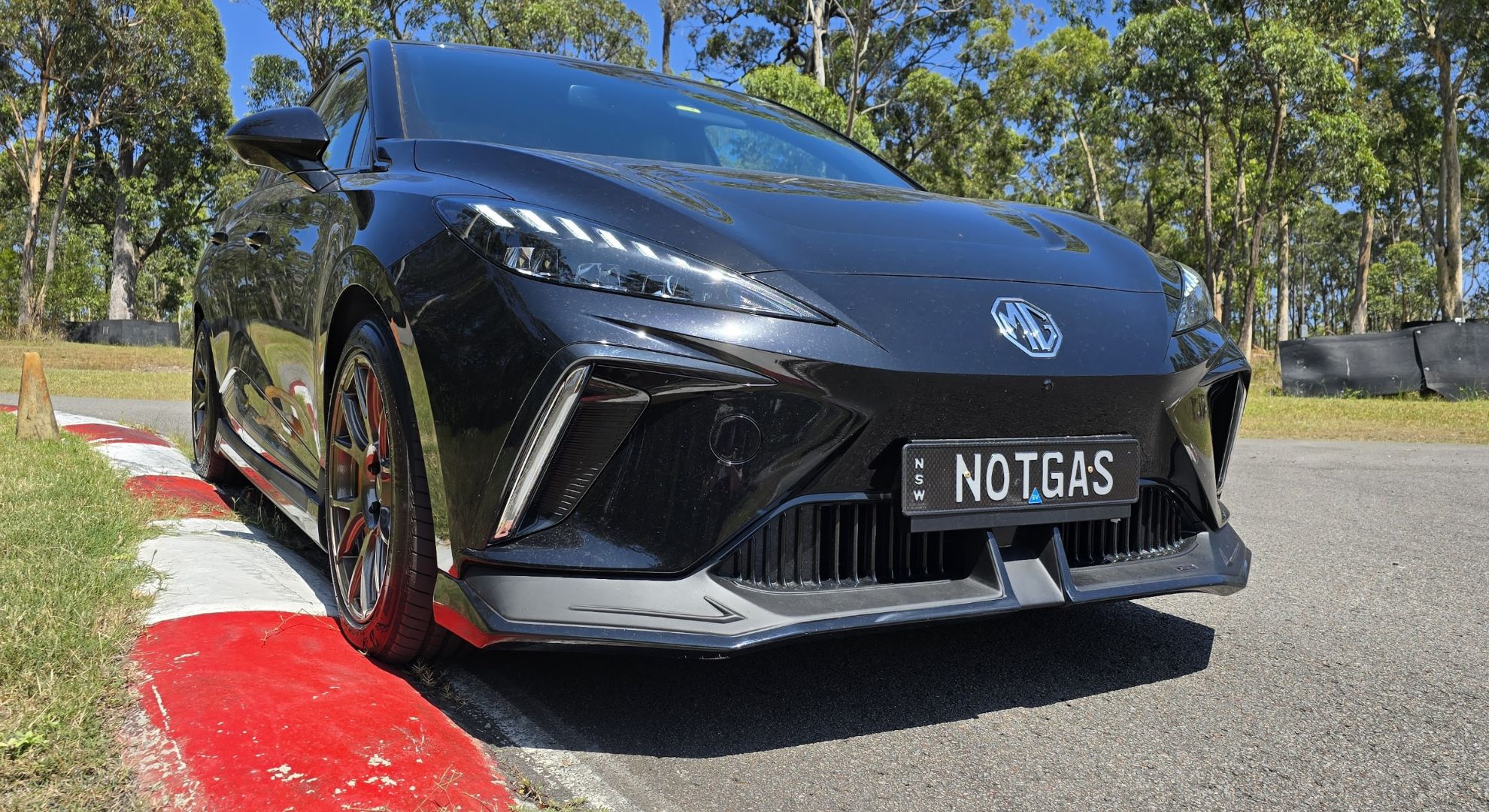
Does all that make for a great car?
You don’t have to worry about poor build quality or a lack of features just because the car is cheap. The MG4 fills the need of being a reliable EV with a decent range, scaling to the driver’s needs across several different price points.
Cheaper variants of the MG4 might read like they have sluggish acceleration, but it’s still more than enough to get up to speed on the motorway and is still outperforming many cheap gas-powered cars when approaching 100km/h. It might have been a year since I last drove a RWD MG4, but (if memory serves) it’s still a winner among its closest rivals – with a satisfying turning circle and on-road feel particularly owing to its RWD drivetrain (many of its contemporaries are less-satisfying front-wheel drive cars) and great suspension. The AWD XPOWER aced the assignment too.
The layout of the interior, while critiqued widely as simple and a bit boring, is more than just functional. A small touchscreen in the middle is home to the bulk of settings tweaks in the car, with several handy quick buttons under the display for volume, air conditioning and other settings. I’d appreciate more buttons, but it's a perfectly serviceable arrangement. There’s also a circular shifter in the center of the car and a neat draw underneath that for quick storage. The back of the car is home to comfortable rear seating and up to 363L storage (1,165L with seats down).
And on the outside, the car is gorgeous in a subtle way. The model I drove (and pictured in the photos on this page) include non-standard rims that really make the car a looker, and despite being quite spacious, it’s comparatively small on the road. It’s slightly longer and wider than a Toyota Corolla and looks much better.
I particularly like the use of physical entry lock/unlock buttons on the front doors, handy for if you want to unlock your car and don’t want to take your keys out of your pocket.
But I don’t believe the car is above criticism – in fact, going a year since my last time driving the MG4 has opened my eyes up to a bunch of things I’d like tweaked or done differently.
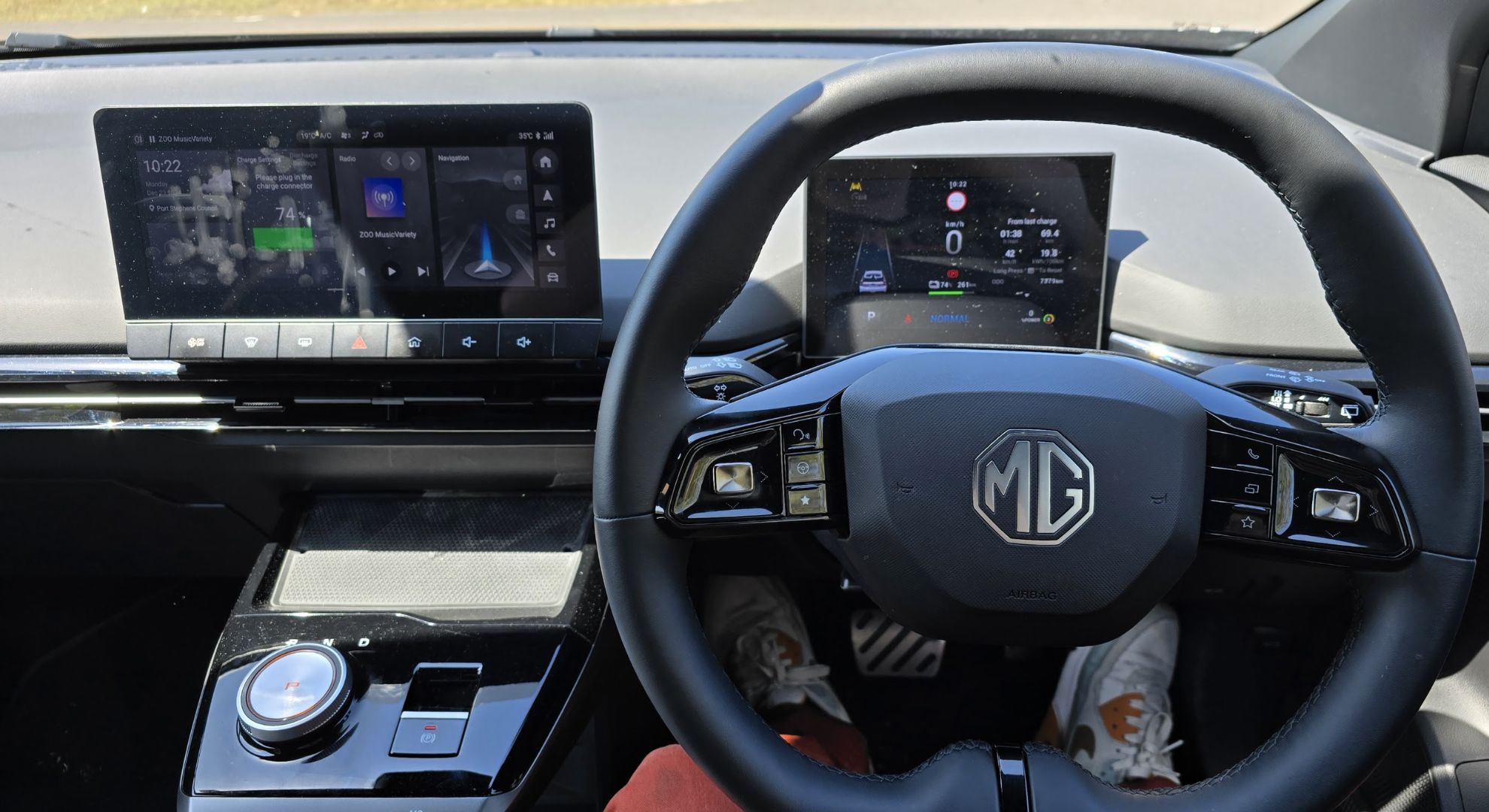
What else do you need?
I’ve no problem with computers becoming engrained in the automotive experience, provided that the software is good. Tesla’s software is brilliant and was pioneering for a time (I now personally prefer the operating systems in Polestar and Ford EVs), but many automakers took the lesson that any digital user interface will do. It’s aggressively fine in the MG4, but it’s an obvious weakness.
Your time with the MG4 will likely be spent mostly with either Android Auto or Apple CarPlay running on the infotainment system – because the inbuilt maps and OS are frankly terrible. They’re slow with long load times (particularly on startup) and have a bunch of quirks that don’t really hold up that well – stuff like buttons poorly communicating that they’ve been pressed and a main menu that looks at least 10 years out of date. Icons are also often small and difficult to read.
More critically: why is this car not capable of over-the-air (OTA) updates, wherein firmware is delivered via Wi-Fi instead of needing to take your car to a dealer? Why do I need to re-enable many settings every time I start the car, such as one-pedal drive and my selected driving mode? On this front, MG’s closest competitor BYD is running circles around the former British automaker.
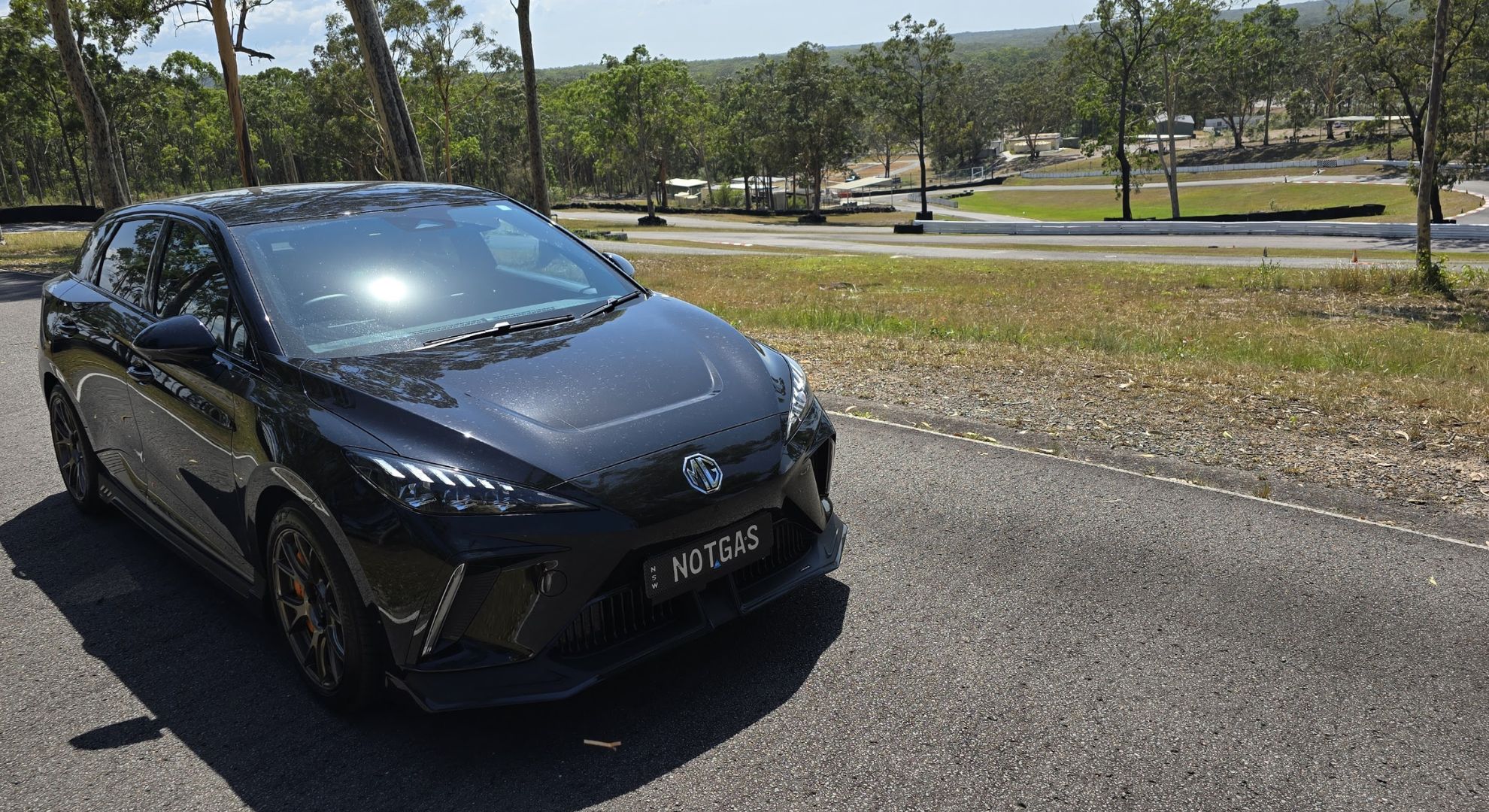
The driver assistance lane-keeping feature is also very finicky. I could never rely on it to continuously identify lanes at speed unless they were thoroughly defined, and it got to a point where I simply disabled the feature. This isn’t unique to the MG4, but I have certainly experienced better, particularly from Polestar and Hyundai.
Overly sensitive auto-braking also remains a persistent complaint among Australian drivers, despite an update in February 2024 intended to address the issue (I haven’t encountered this problem), though admittedly I’ve heard and experienced similar things with different EVs. This can be disabled in the MG4 too, but it sucks that it needs to come to that.
Parts of the front cabin are also glossy to a fault, and can occasionally be an annoyance with the sun causing reflection. The front passenger seat is manual only, even in models that offer an electric driver’s seat, which may be a bugbear for couples.
Finally, even though the prototype model I drove included an automatic, button-operated tail lift, this is not an offered feature on any MG model. It’d be useful for many families and drivers, but it’s not an option unless you modify it yourself.
These issues would be good for MG to address with a refresh, but ultimately my love for the MG4 still stands – in the face of the competition on price and performance, and considering the modes and use of most drivers, the MG4 is still my favorite consumer EV in the world.
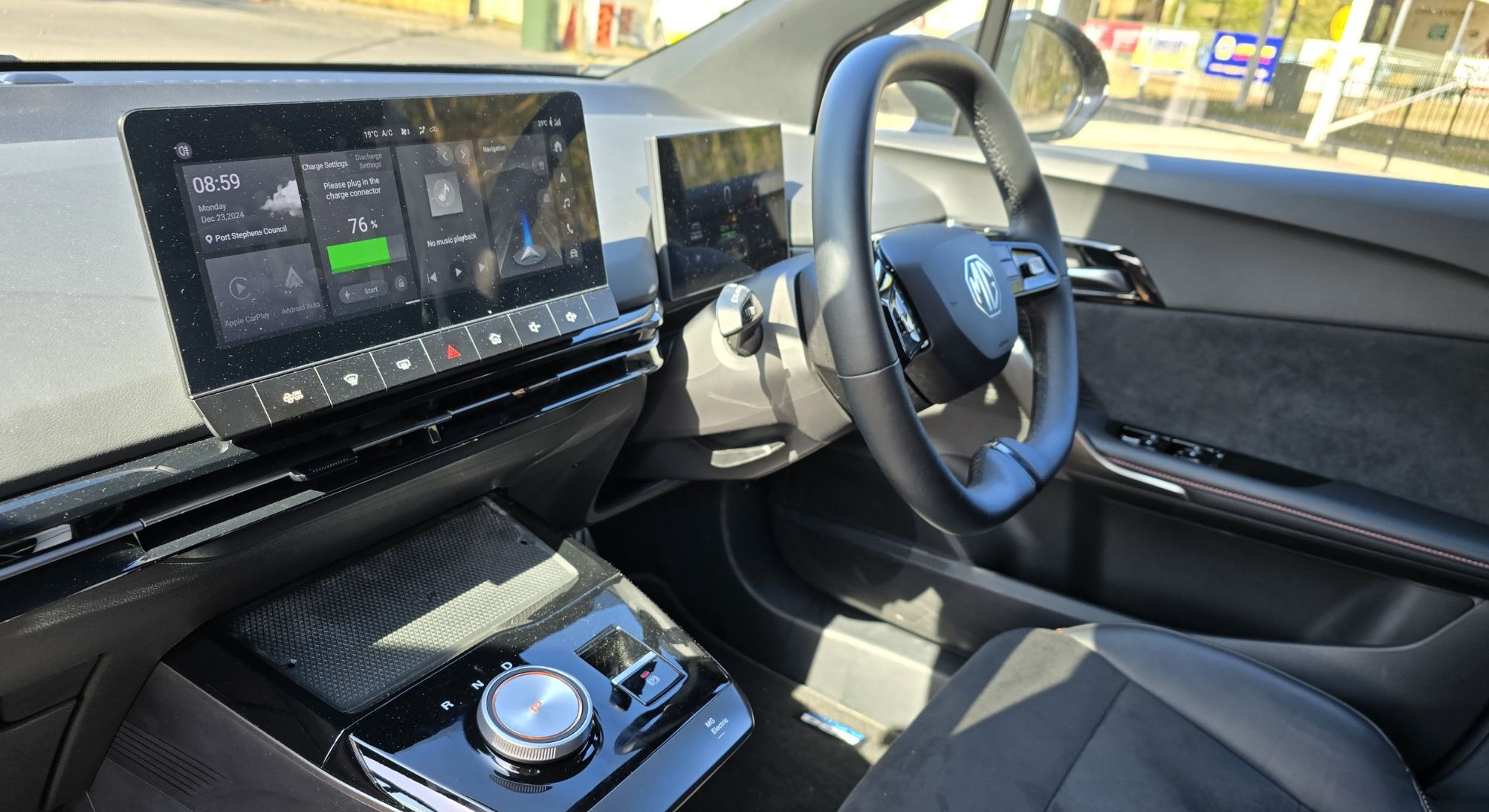
Made for the masses
The MG4 starts from £26,995 / AU$34,990 and rises to £32,495 / AU$46,354 for the Essence (or ‘Trophy’ in the UK) before additional costs (Australian pricing representative of the cheapest state option). At the height of the range, the XPOWER trim starts at £36,495 / AU$57,704.
At those prices, looking at the range and appreciating the brilliant ride handling, it’s hard to not love the MG4. Software misgivings aside, it feels more like an EV for the masses than anything Tesla has made, and it’s available at a much lower price than the Model 3.
And speaking specifically to the US market, where the cheapest EV on sale is the $29,280 Nissan Leaf, the MG4 would certainly rock the boat – with a rough price conversion from the cheapest Australian price translating to about $21,808. This car has the potential to be extremely competitive in the American market while offering similar range estimations to many of the cheapest options available.
I’m especially excited for what MG does with this car in the future: a faster public charging capacity, along with a more competent OS and a power-lifted boot would be cause for celebration.
But the joy of the MG4 is that it’s mostly fine as-is with that awesome price. If it’s available in your country, and it’s the right size for your lifestyle, you likely won’t regret purchasing the car over any other EV. Just make sure you’re across the safety features and toggles.
Special thanks to the Newcastle MG Owners Club for letting me take some pictures of the car on their Ringwood Park hillclimb track for this article.
You might also like…

Zac has been in the tech writing game for six years, having previously written for Gizmodo Australia, Canstar Blue, and The Daily Mail Australia (with articles on Nine, Junkee, Kotaku Australia and Lifehacker Australia). He’s a huge nerd with a deep passion for technology. While his main focus at TechRadar Australia is phones, monitors and peripherals, he also has a deep interest in the growing Australian EV landscape. Outside of Techradar, Zac’s a Headspace (a youth mental health organization) volunteer and an avid gamer.
You must confirm your public display name before commenting
Please logout and then login again, you will then be prompted to enter your display name.